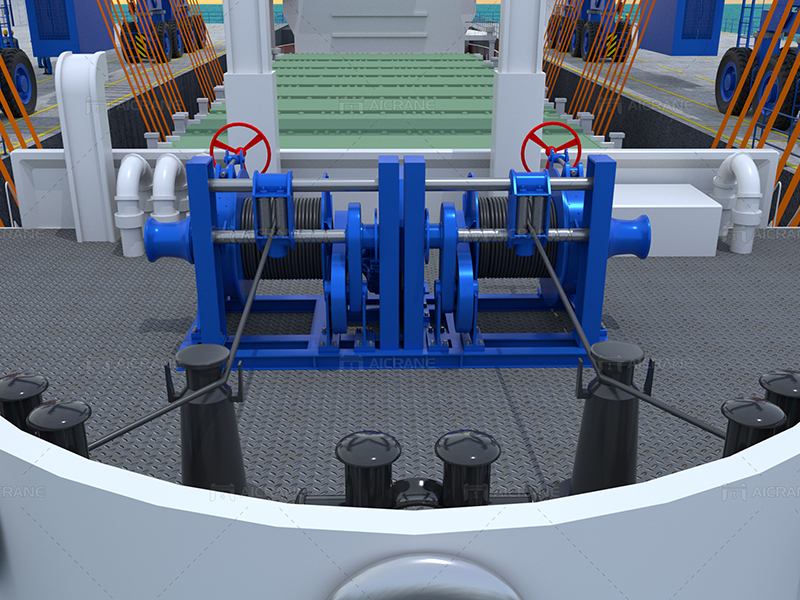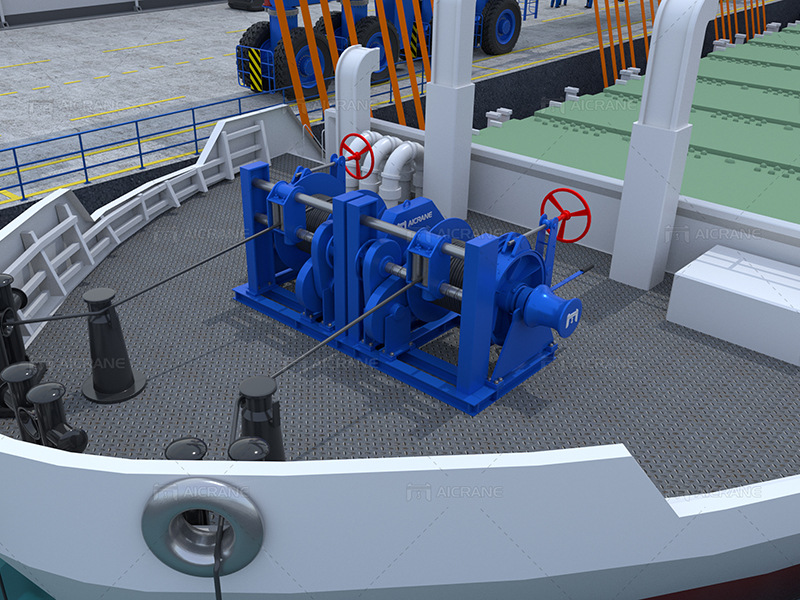Mooring winches are essential components in the maritime industry, playing a critical role in ensuring the safety and stability of vessels while docked or anchored. These powerful mechanical devices are designed to manage the mooring lines, which are the ropes or cables used to secure a vessel to a berth, quay, or buoy. Understanding mooring winches and their operation is crucial for maritime professionals, as they are pivotal in maintaining the safety of vessels and their crew. In this article, we will delve into the key aspects of mooring winches, including their types, functions, components, and maintenance, providing you with a comprehensive overview of these vital tools in the maritime world.

Types of Mooring Winches
Mooring winches come in various types, each designed for specific applications and vessel sizes. The two primary types of mooring winches are:
Capstan Winches: Capstan winches are vertical winches designed for smaller vessels. They consist of a vertical drum that rotates to wind or unwind mooring lines. Capstans are known for their simplicity and are commonly used on fishing boats, tugboats, and smaller vessels. Their design allows for easy and precise control of mooring lines, making them ideal for operations that require manual intervention.
Drum Winches: Drum winches, also known as horizontal winches, are designed for larger vessels such as cargo ships, container ships, and oil tankers. These winches have a horizontal drum that can spool a significant length of mooring line. Drum winches are generally more powerful and automated, offering greater control and versatility for securing larger vessels.
Functions of Mooring Winches
Mooring winches serve several critical functions in the maritime industry, ensuring the safety and stability of vessels during berthing, anchoring, and mooring operations. Some of their primary functions include:
Securing the Vessel: Mooring winches play a crucial role in securing vessels to docks, quays, or buoys. They wind in the mooring lines to maintain tension, preventing the vessel from drifting away or colliding with other ships.
Anchoring: Mooring winches are also used to handle anchor lines, allowing vessels to anchor securely at sea. They control the anchor’s deployment and retrieval, ensuring the vessel remains stable and in position.
Towing and Maneuvering: In towing operations, mooring winches assist in controlling the towing lines, helping vessels to tow or push other ships safely. They also aid in maneuvering vessels in ports and confined spaces.
Cargo Handling: In some cases, mooring winches are employed for cargo handling. They can be used to lift and lower goods between the vessel and the shore, enhancing the efficiency of loading and unloading operations.

Components of Mooring Winches
To understand how mooring winches operate, it’s essential to be familiar with their key components. These components work together to ensure the proper functioning of the winch. The main components of a mooring winch include:
Drum: The drum is the cylindrical or horizontal spool around which the mooring lines are wound or unwound. Its size and design depend on the type of marine winch and the specific requirements of the vessel.
Brake System: The brake system is crucial for controlling the tension and release of the mooring lines. It ensures that the lines do not release too quickly, preventing accidents and damage.
Electric or Hydraulic Motor: The power source of the mooring winch, which can be either an electric motor or a hydraulic motor. This component provides the necessary force to wind or unwind the mooring lines.
Gearbox: The gearbox is responsible for transmitting power from the motor to the drum, allowing for precise control of the line’s movement.
Control Panel: The control panel is where the operator manages the winch’s operations. It allows for speed and direction control, making it possible to adjust the tension of the mooring lines.
Maintenance and Safety
Proper maintenance and safety protocols are paramount when working with mooring winches. Neglecting maintenance can lead to equipment failures, putting both the vessel and its crew at risk. To ensure the safety and reliability of mooring winches, consider the following maintenance and safety guidelines:
Regular Inspection: Perform routine inspections to check for signs of wear, corrosion, or damage to the winch components. Address any issues promptly to prevent further damage.
Lubrication: Keep all moving parts well-lubricated to reduce friction and extend the winch’s lifespan. Use appropriate lubricants recommended by the manufacturer.
Operator Training: Ensure that operators are well-trained in the use of mooring winches and are aware of safety procedures. Only qualified personnel should operate these machines.
Emergency Stop: Mooring winches should have an emergency stop feature to halt operations in case of an emergency or equipment malfunction.
Load Capacity: Never exceed the recommended load capacity of the winch, as overloading can lead to equipment failure and accidents.
Safety Guards: Use appropriate safety guards to protect operators from moving parts and to prevent entanglement in the mooring lines.
Regular Testing: Periodically test the ship winch under controlled conditions to ensure that it operates smoothly and reliably.
Conclusion
Mooring winches are essential tools in the maritime industry, ensuring the safe and secure berthing, anchoring, and mooring of vessels. Understanding the different types, functions, components, and maintenance requirements of mooring winches is crucial for anyone involved in maritime operations. By adhering to safety protocols and conducting regular maintenance, operators can rely on mooring winches to perform their critical functions, ensuring the safety of both vessels and their crews. These versatile machines are a testament to the importance of technology in modern maritime practices, and they continue to play a vital role in the ever-evolving world of shipping and navigation.